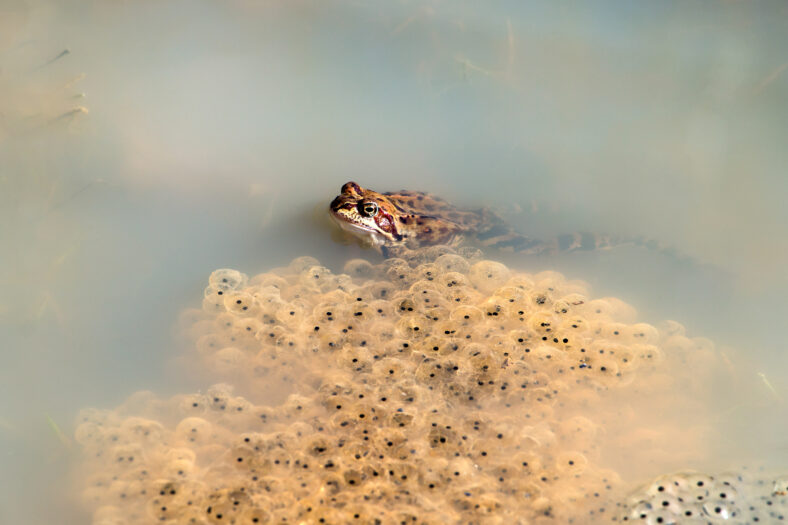Tadpoles Grow Faster In Order To Evade A Deadly Virus

Due to amphibians’ sensitivity to habitat loss, climate change, and pollution, they are dying in large numbers. Since the 1970s, approximately 200 amphibian species have become extinct.
According to the International Union for the Conservation of Nature, 34 percent of the 7,296 known remaining species are at risk.
Disease is another reason why amphibians are so vulnerable. Ranavirus is a potentially deadly disease that spreads quickly among fish, frogs, and salamanders.
It can jump from host to host, devastating species that have not adapted a defense against the virus. But a new study has found that amphibians are not totally at the mercy of ranavirus.
“Here, we show that in response to ranavirus, wood frog tadpoles change their growth, development, and resource allocation. This may help tadpoles tolerate the energetic demands of infection or escape risky environments to avoid infection entirely,” said Logan Billet, the first author of the study and a PhD student at Yale University.
In the United States, ranavirus has caused 40 to 60 percent of amphibian deaths. Once infected, larvae become lethargic, stop feeding, swim abnormally, and bleed internally.
An outbreak often leads to die-offs of all larvae in a pond. There is evidence that climate change is increasing the frequency of these outbreaks.
The research team focused on the wood frog, a species that breeds in temporary ponds formed from snowmelt. Between 2021 and 2023, they observed the growth and development of wood frogs in a forest in Connecticut. They compared three types of ponds, monitoring a total of 47 ponds.
Of the 47 ponds, 35 remained virus-free over an entire season, seven contained some infected tadpoles but low death rates, and five experienced an outbreak that killed off all the tadpoles.

Sign up for Chip Chick’s newsletter and get stories like this delivered to your inbox.
From mid-April to July, the researchers collected up to 20 tadpoles from each pond for lab analysis. They tested 1,583 livers for ranavirus and measured the total length and developmental stage of 4,299 tadpoles.
Amphibians have flexible growth. Their size and development can vary. For instance, a tadpole might be smaller than average but advanced in development or vice versa.
The results revealed that tadpoles in ponds hit by die-offs grew significantly faster, leading to a larger body size over the first month of life. They also matured more quickly—about 0.38 stages ahead of others.
But once mass mortality began, the rate of growth declined and they ended up being smaller and less developed than their healthy, uninfected counterparts. In infected ponds that saw no die-offs, tadpoles showed similar trends.
They also grew much faster and reached stages 1.7 Gosner points ahead of tadpoles in clean ponds. The researchers concluded that tadpoles exposed to ranavirus grow and develop faster early in life. It may be a way for them to avoid death.
“Accelerating growth and resource allocation early on may allow tadpoles to improve their physical condition, and thus the strength of their immunity, in anticipation of infection. They might also metamorphose and move onto land earlier, potentially reducing their exposure to ranavirus,” said Dr. David Skelly, senior author of the study.
“These responses are likely to give tadpoles a survival advantage. We hypothesize they are the reason why mortality wasn’t always 100 percent, but only partial in some outbreaks in our study.”
The study was published in Frontiers in Amphibian and Reptile Science.
More About:Animals